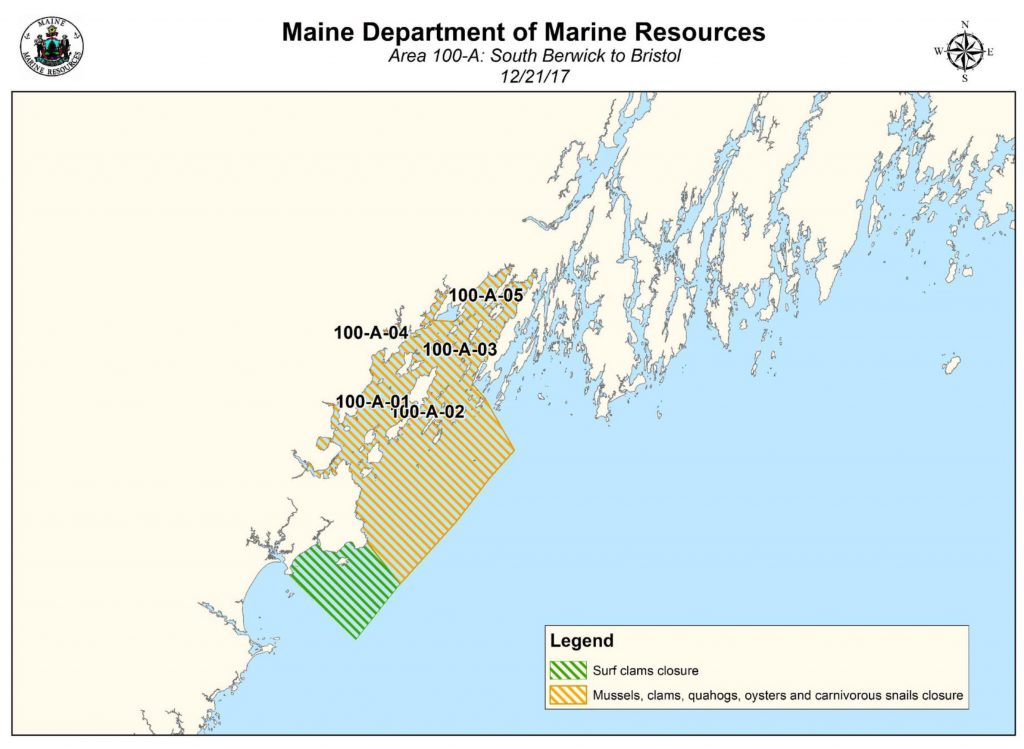
Algal bloom forces closure of shellfish farming operations
February 26, 2018
By Matt Jones
An algal bloom detected in December has forced the shutdown of all but four shellfish aquaculture operations along the south coast of Maine.
The area between Dyer Point in Cape Elizabeth and Basin Point in Harpswell has been impacted by amnesic shellfish poisoning (ASP).
“Only those with a Memorandum of Understanding (MOU) with the Department are allowed to sell their product during a closure,” says Jeff Nichols, Director of Communications for the Maine Department of Marine Resources (DMR). Only four operators have an MOU with the department, he says.
The MOU requires intensive testing of product from the farms. Samples showing domoic acid levels of 20 parts per million in shellfish meat tissue are declared unsafe for consumption and cannot be sold.Domoic acid is the toxin that causes ASP.
Nichols says the impact from this closure is less significant than the 2016 closure, wherein dealers throughout the supply chain had to destroy 58,080 lbs of mussels harvested in the Frenchman Bay area.
The cause or causes of these algal blooms are a major question for the scientific community, says Nichols.
“While the phytoplankton associated with ASP has been detected in Maine waters for many years, 2017 was only the second year in which domoic acid reached levels that triggered closures,” says Nichols. “So scientists are still trying to determine what causes cell concentrations of the phytoplankton Pseudo-nitzschia to increase and become toxic.”
As a result of the 2016 closures, Nichols says the DMR has begun testing for domoic acid when cell counts of Pseudo-nitzschia were lower in phytoplankton samples. If the test showed domoic acid, the department would begin testing shellfish immediately, as opposed to waiting a week as had been the standard based on past experiences with red tide.
“DMR also began to monitor for different species groups of Pseudo-nitzschia in order to determine more closely when the different species become toxic,” says Nichols. That research will be considered as Maine works to improve its ability to predict toxicity and avoid recalls.”
 Map shows the areas of the Maine’s southern coast where shellfish farming was suspended due to algal boom issues
Map shows the areas of the Maine’s southern coast where shellfish farming was suspended due to algal boom issues Advertisement
- Washington State House committee rejects anti-salmon farming bill
- Permitting process curbs US aquaculture growth





